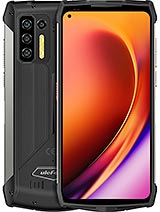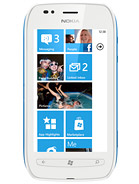Farewell to our old battery test: a look back at 12 years of testing

After 12 years it was finally time to retire our original battery test – the smartphone world had evolved so much over that time that we felt it no longer produced relevant results. This is why we introduced the new Active Use Score. But as we welcome the new protocol, we also want to throw a retirement party for the old-timer.
In the span of over a decade we had tested 1,058 phones. The first was the Nokia N9, the last was the Realme GT5 240W. 240 watts! That really puts things in perspective, the Nokia N9 charger only output 5W – 5 volts, 1 amp was just fine back then. But we’re not here to talk about charging speeds.


12 years of evolution in battery and charging tech
The mobile world has changed significantly since we started doing the original test. 4G spread across the world and in the last few years 5G coverage is growing. Videos left DVD resolution behind and moved into the High Definition era. Another form of mobile entertainment, gaming, also rose to prominence.
Our original test scenario only covered voice calls, web browsing and offline video playback – an hour of each every day, the rest of the time the phone sat idle. If we were to start over and repeat the test for all 1,058 phones back to back, it would take us 90,962 hours – that is 3,790 days or around 10 and a half years. In other words, if we take a time machine back to November 8, 2011 and redo the tests one after the other, we would well into 2022 by the time we were done.
The cumulative test time 3 years of talking on the phone, 1.5 years of browsing the web and 1.6 years of watching videos. In the olden days, we sometimes had to hover over the phone, waiting for the video to finish so that we could hit “play” again – the arrival of video players that had a “repeat” mode was a blessing. These days we rely on automation to handle such menial tasks.
Before we put the old test to rest, we wanted to call out the phones that topped the charts. The Ulefone Power Armor 13, which we reviewed back in 2021, is an absolute beast – its massive 13,200mAh battery gave it an Endurance Rating of nearly 300 hours. This is well beyond the reach of the nearest competitor – the Doogee S88 Pro, which stands at 202 hours with its 10,000mAh battery.

Ulefone Power Armor 13

Doogee S88 Pro
Unsurprisingly, the Power Armor 13 topped the charts in individual tests too. It is capable of over 100 hours of talk time on a single charge, which is again head and shoulders above the second best phone – the Blackview BV8000 with an 8,380mAh battery and around 66 hours of talk time. The nearly 40 hours of web browsing on a single charge is also an impressive feat by the Ulefone, though this time second place is much closer – it’s the S88 Pro with 35 hours.

Blackview BV8800
Finally, for the video playback test... hold on, we have an upset! The petite Sony Xperia 10 V with its 5,000mAh battery beat the Ulefone by an hour. In fact, the 8.3mm thick phone that weighs 159g (compared to 20.8mm and 492g for the Power Armor 13) is one of the best phones in terms of battery life and placed #5 in the overall chart in terms of Endurance Rating with a score of 175h. It beat the Xperia 10 IV, which previously held that spot with a score of 163h.

Sony Xperia 10 V
The only other “normal” phone to get into the Top 5 is the Realme 6i from 2020. It too has a 5,000mAh battery and managed a monumental 186h Endurance rating – almost as much as the Blackview BV8800 (199h). Alas, high power draw when playing video held it back. Still, the Mark 5 and 6i show that a huge battery isn’t the only way to maximize endurance.

Realme 6i
We have sung the praises of some of the longest lasting phones ever made, now let’s cast a disappointed glance at some of the under-performers. The HTC Titan II, a 2012 Windows Phone 7 device with a tiny 1,730mAh battery yet a large 4.7” display managed a pitiful 23 hours Endurance Rating, not even a full day.

HTC Titan II
Another Windows Phone 7 handset, the Nokia Lumia 710, with an even smaller 1,300mAh battery (and smaller 3.7” display too) managed a slightly better 27h Endurance rating, but had pretty terrible scores in the individual tests (web – 3:51, video – 3:27). The Titan II didn’t do much better for web browsing (4:05), but it lasted noticeably longer when playing videos (5:50) and it was much better as an actual phone (with just over 9 hours of voice calls in its tank).

Nokia Lumia 710
That is not to say that all Windows Phones had bad battery life, some did pretty well. And let’s not pretend that early Androids were better, there are the likes of the Sony Xperia P and LG Nitro HD that sit at the bottom of the chart.
Those were some of the best and some of the worst. But a a typical phone in this test would score an 86 hours Endurance rating, with a bit over 24 hours of talk time, a bit less than 12 hours of web browsing and a bit less than 14 hours of offline video playback.
Here is a histogram that shows the distribution of phones – almost all of them are clumped between 30 hours and 130 hours. There are outliers, of course. You can see the Ulefone Power Armor 13 allll the way over to the right and a few others that are in the gulf between 160 hours (the longest a typical phone lasts) and 300 hours.

The chart – you can see all results from the original Endurance Rating test over on this page. There’s a similar page for the new test here, where you will see some familiar faces.
Related
Reader comments
- Aszi
- 11 Dec 2023
- xjH
Why did they took out the SOT test? We need it for us to know the capability of the battery in idle mode.
- Anono
- 14 Nov 2023
- LeR
The new test is clearly designed to make expensive, powerful devices look better relative to power-sipping devices. Yet another stitch-up/confidence trick by big tech.







 Huawei
Huawei Infinix
Infinix Samsung
Samsung Apple
Apple Xiaomi
Xiaomi


